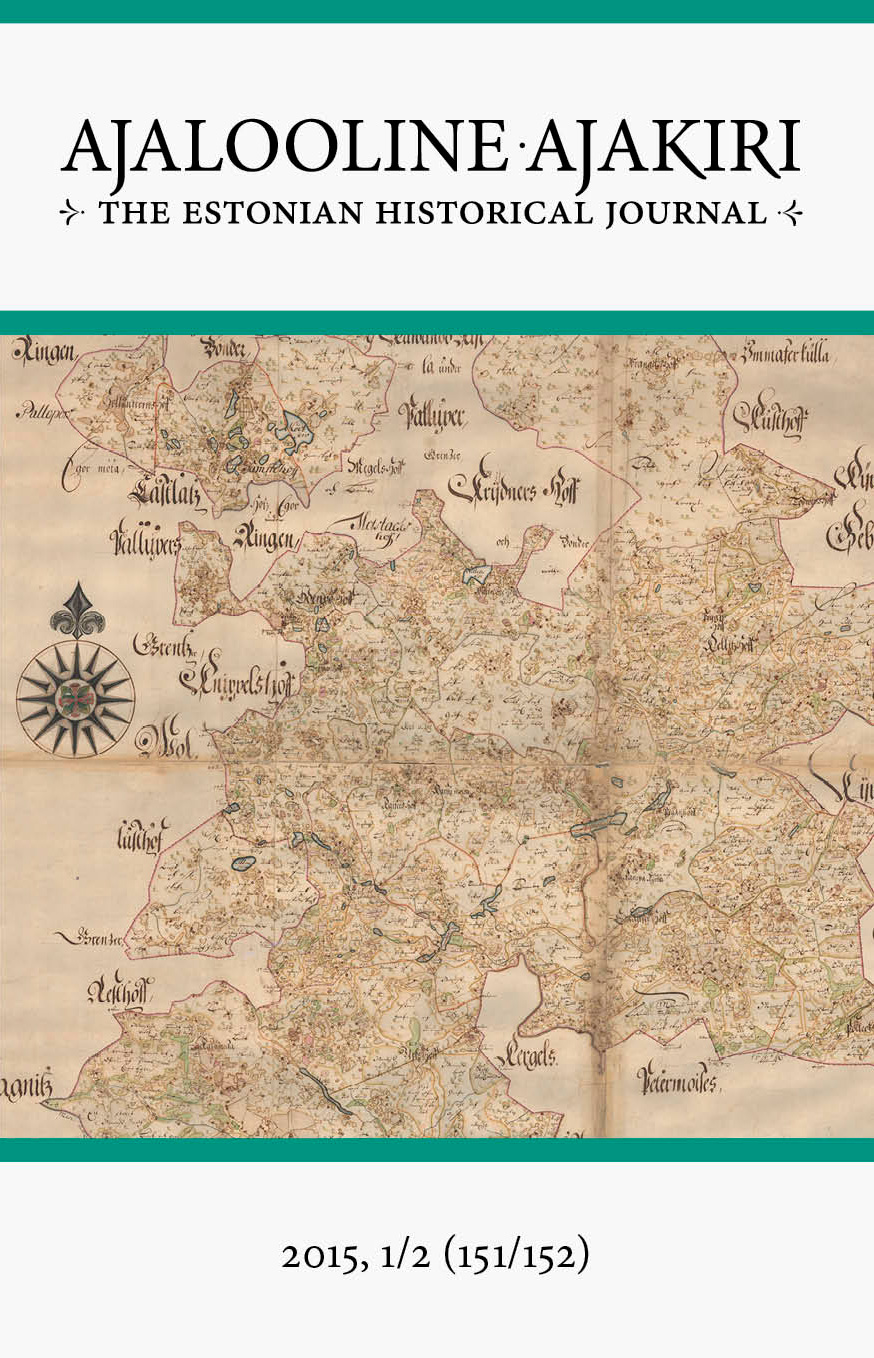Pühast Võhandust, Pühalättest ja ohvrijärvest Otepää lähistel [Sacred waters: the River Võhandu, Spring Pühaläte and sacrificial lake near Otepää]
DOI:
https://doi.org/10.12697/AA.2015.1-2.01Abstract
The river Võhandu in south-eastern Estonia has become famous through the book Kurtzer Bericht und Unterricht Von der Falsch-heilig genandten Bäche in Lieffland Wöhhanda, written by Johann Gutslaff, the pastor of Urvaste parish (1644). The book mediates information about the events of 1642 when peasants of the riverside areas destroyed the new water mill of Sõmerpalu manor. This act took place because the river was considered to be sacred by the locals, and hindering of the water flow was thought to be the reason for the long-lasting bad weather. News of the water mill on the sacred river spread quickly over all Livonia: from Riga to Narva, Pärnu and Reval, and also among the Latvian-speaking population. Gutslaff mentions two assemblies of peasants at Osula water mill (Fig. 1): on May 1 (when people gathered from manor areas on the upper course of the river) and July 8 (when those from the lower course gathered, including from Russia, i.e. from present-day Setomaa). Evidently, the hinterlands reflect communication areas and communication traditions of ancient and probably prehistoric origin. The article presents historical and folkloric information about the beginning of the sacred Võhandu River, discussing also the regions impacted by and reasons for its sacredness. The spring visited and described by Gutslaff one month after the events in Osula can be identified as the spring called Pühaläte (‘sacred spring’), which is reflected in folkloric data and still remembered by the older locals. The place is located in the historical Kolju village, ca 10 km south of Otepää (Figs. 2, 3). The first folklore note about its sacredness and ability to change the weather comes from 1866. Although the spring was buried under gravel during road re-construction work in 1983, its approximate location (Fig. 5) was identified in 2014 by the finding of four votive coins from between 1574 and 1707 (Fig. 6). According to Gutslaff, the spring was located in a sacred grove, and keeping its waters clean was important for having good weather. It was not allowed to cut trees or break branches in the grove, and misbehaviour could cause diseases or even death. The sacredness of the spring and its ability to change the weather is also reflected in folkloric data. Toponyms in the surroundings of the spring give evidence of a large sacral area (Figs. 3, 4), and lore mentions popular assemblies in the grove at the sprint which continued until mid-1890s. Votive coins were brought to the sprint until the 1940s, and the water was used for healing. The custom to stop a funeral procession that was passing by the spring and to sprinkle some of its holy water on the coffin – a unique practise in Estonia – survived until the 1950s/60s. The concept of sacredness is bound, according to Gutslaff, with all the lakes which Võhandu ran through. The first lake on the path of the sacred river, called Lake Ilmjärv (‘weather lake’) by Gutslaff, can be identified as present-day Lake Kauru (Figs. 7, 8). Most likely, this lake is identical to the lake 10 miles from Otepää that was mentioned by the Pope’s legate Antonio Possevino in 1585 as a site of infant sacrifices, practiced to avoid thunder and bad weather. The sacrificing of children and cattle in some lakes infected by evil spirits to reconcile them was also mentioned in the annual report of the Jesuites in 1583. These memories of infant sacrifice are probably reflected in a popular type of legend which tells about a deal with a supernatural creature living in a lake or a pond: the person who wants to get a treasure must offer a child to him (but gives a cat in a bag instead). The Jesuites’ notes about sacrifices to the lakes also fit well with Gutslaff’s notes about infant sacrifices (in the past) and oxes (in his time) to the sacred Võhandu River. The origins of the sacredness of Pühaläte spring might be hidden in the geographical conditions of the region. The Võhandu River, which was considered sacred as a whole, begins in the watershed which separates its basin from the basin of Väike-Emajõgi River. Here the close connections and common origin of the words ‘sacred’ and ‘border’ appear. To the same watershed belong also Lake Kauru/Ilmjärv (located 600 m east of the spring), and three ponds which can predict the weather at the Konnu (Paina) farmstead (1.2 km north-east of the spring). There the water level in spring time was believed to indicate the weather of the forthcoming summer. The name Ilmjärv refers both to the weather and being the uppermost lake in the basin of a river. The sacredness of the watershed may also include Lake Pühajärv (‘sacred lake’) – this is the first lake on the path of Väike-Emajõgi River, which was also called Pühajõgi (‘sacred river’) on its upper course. The sacral complex of Võhandu River is unique in Estonia. Lore about the site, although almost forgotten in the present time, gives evidence of the continuity of beliefs and religious practices from the early seventeenth to the late nineteenth and twentieth centuries. KEYWORDS: sacred spring, sacred river, sacred lake, Livonia, Early Modern Times, human sacrifice.Downloads
Download data is not yet available.
Downloads
Published
2015-06-30
Issue
Section
Artiklid / Articles

